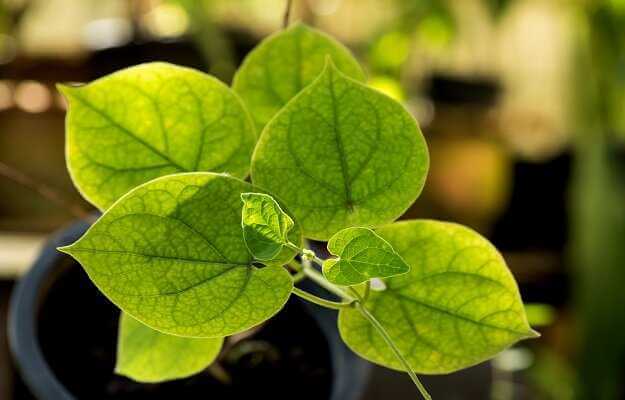- +033 2572 7171
- info@dhanvantary.com

4.5 Rating | 4500 Review

4.5 Rating | 4500 Review
Patha is selender climbing shrub with pubescent branches. Leaves of this herb are peltate about 12cm long. Yellow colored flowers of this plant are very small. Flower contains four hairy, obovate and oblong sepals. Peduncle of male flowers is 18mm long and arranged in axillary cymes. Female flowers of this herb are solitary or twin, elongate and axillary racemes.

Length of filaments is longer than corolla. Fruits are drupe, 6mm long and 4mm broad. Fresh Fruits are compressed, hairy-pubescent, subglobose, red colored, transversely ridged, endocarp and turn black after ripening. Fruit contains seeds that are like horse shoe in shape.
Abuta, ice vine, false pareira and velvet leaf all are common names of patha. This herb is commonly found in orchards, parks and gardens. In ayurvedic medicinal system this herb is used for its antispasmodic action. Achayra shushrut used this herb for the cleansing and healing of wounds and ulcers. Acharya charka used this herb to treat various ailments associated with female reproductive system. According to rajnighantu this herb is “bhagna sandhankrit”- used in fracture healing. Patha is slender and tropical woody herb that resembles a ruffled ribbon. This herb is slightly aromatic. For edema, cystitis, fever and kidney inflammation this herb is used. It is very powerful herb that is used to balance hormonal imbalance. This herb is very effective in female’s related ailments such as menstrual cramps, uterine hemorrhages, and post natal and prenatal pain. It is also used to prevent miscarriage. It is also called midwives herb as it is used for the stimulation of labor. It is best antiseptic for chronic inflammation of bladder and also used as diuretic. This plant is also used as a tincture and medicinal tea.
According to Ayurveda there are two types of patha:-
Main alkaloid compound present in this herb is berberine, and this alkaloid compound is hypotensive, antifungal and anti-microbial in nature. Other chemical compound present in this herb are hayatin, hayatinin, menismine, methalonic acid, cissamine, cycleanine, bebeerine, hayatidin and quercitol.
Cissampelos pareira is mainly native to India and distributed in Asia, east Africa and America. This herb is easily available in tropical and sub-tropical regions of India. It is widely distributed in Himachal Pradesh, Tamilnadu, Nagpur, Bihar, west Bengal, Punjab and Rajasthan. In east it is found in Aravalli hills of Marathwada, Konkan and Bababuden hills of Mysore.
|
Hindi / Sanskrit |
English |
||
|
Rasa |
Tikat |
Taste |
Bitter |
|
Guna |
Laghu, Tikshan |
Physical Property |
Light, Sharp |
|
Virya |
Ushna |
Potency |
Hot |
|
Vipaka |
Katu |
Metabolic Property (After Digestion) |
Pungent |
It balances vata and kapha dosha.
|
Charak Samhita |
Sushrut Samhita |
|
|
